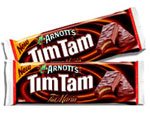Driving innovation in an FMCG environment can be harnessed through partnering up of brands that share similar target markets. Problem is, we just aren’t seeing any of this on our supermarket shelves.
Recently we witnessed an innovative move by leading South African biscuit brand, Pyott’s, to venture into the emerging rice cracker market through entering into a co-branding alliance with Australia’s leading rice snack brand, Sakata.
At the time, Sakata was a privately owned company, very innovative in the area of manufacturing rice-based snacks. This alliance opened up a whole new category for Pyott’s, enabling the brand to lend on existing successful leading edge products that were not available to South African consumers.
Regrettably, as so often happens with private national companies that pose a threat to established global leaders, Frito Lay acquired Sakata, and the co-branding venture came to an abrupt end.
While the Pyott’s Sakata brand had been in the market long enough for it to have gained a large loyal consumer base, Sakata, under the guidance of its new masters, has not had any success in re-launching the brand through Simba. Its dream of conquering the South African rice snacks market has been whittled.
Meanwhile, Pyott’s has bounced back with a VitaSnack range of rice crackers from a new off-shore supply source, growing its share of the rice snacks category to 20%.
Adding excitement and added value
As can be seen from the above example, co-branding ventures do not always run smoothly. In addition they often tend to be short-term, designed to add a quick burst of vitality to existing brands.
A more recent offshore co-branding success has been that of the world famous Tia Maria brand and Arnott’s Tim Tams, delivering added value taste to consumers.
But why do we not see more local companies entering into co-branding ventures that would so obviously add excitement and added value to their respective brands? South Africa’s everyday indulgences such as Romany Creams, Cadbury’s Dairy Milk, Kit Kat, Amarula Cream, Black Cat Peanut Butter, Chomp and Marmite all lend themselves to an abundance of co-branding opportunities that can increase brand visibility, enlarge the target consumer market, penetrate new product areas and ultimately grow profits for the parties concerned.
Take the new Sipahh Milk Flavouring straws range of kids’ products from Unistraw. Datamonitor listed this product in the top ten innovations of 2006. How much more effective and exciting could its South African launch have been had Sipahh entered into co-branding alliances with companies of the stature of Cadbury, NBL and Tiger Brands, introducing extensions such as Chomp, Black Cat Peanut Butter, Bakers Zoo biscuit or Chappies bubble gum flavours?
And what of local companies like NBL entering into co-branding alliances with Amarula, delivering Amarula-centred Romany Cream biscuits? Or a soft-centred Black Cat peanut butter paste deposited in a shell and enrobed with Cadbury’s Dairy Milk Chocolate? Even Marmite-flavoured mini Provita Bites for the kids would generate some level of market excitement?
We haven’t even touched on the opportunities that exist in the area of value-added ice cream. Take the Unilever Streets Blue Ribbon Ice –Cream and Tim Tam biscuits, linking two of Australia’s leading brands from different categories. I’m sure that you can think of some awesome local combinations!
Imagine an alliance between Kellogg’s Special K and USN to deliver a protein water beverage targeting females? Special K has launched a protein water range overseas; however, credible protein delivery would seem incongruent with consumers’ perception of the Special K brand. An alliance with the USN brand would overcome such an obstacle.
Alliances can create new categories
Picture a co-branding venture or alliance between Frisco and ABI to deliver a new segment to SA’s ready-to-drink beverage category – iced coffee. Starbucks, under an alliance with PepsiCo, successfully launched a range of ready-to-drink iced coffees in the US. The SA beverage category is ready for a breath of fresh air. But will we have to wait for an offshore company to make it happen here?
Clearly there is no shortage of innovative ideas to generate excitement amongst consumers by matching leading brands. It is time that we saw leading SA brands from their respective categories forge together into new territory. I suspect it’s more about the desire and ability of organisations and their teams to firstly see the opportunities and secondly to have the commitment to work together to make projects of this nature succeed. It calls for visionary leadership.
Collaboration amongst South Africa’s leading brands is required if they are to stand up over time against global competitors who have the necessary skills, low cost manufacturing base and financial resources to chip away at this market.
The key to success is to match brands that share a similar target market and are market leaders in their respective categories. What you want to avoid is a scenario of a weak brand being strengthened by a strong brand to the detriment of the latter. By combining the strengths of two market-leading brands and tapping into the combined competencies of their owners, true innovation can occur, creating significant value for the companies concerned and their consumers.
Steps to co-branding success
Develop alliance strategies that make sense, allowing business strategy to drive the alliance decision. Design the alliance to fit in with the business strategy, ensuring that the focus is on developing the alliance relationship, leading to mutual trust. Partner up with brands and companies that can deliver complementary capabilities.
Ensure that you manage the process effectively internally. This will mean implementing a change management program, structuring elements of the organisation in such a way that the alliance is given the necessary support to succeed.
See the bigger picture and don’t get bogged down in petty disputes, which are a sure fire way of derailing the process before it even gets off the ground. Leave big egos outside of the process or the alliance is doomed. Structure the financial aspects of the alliance in such a manner that there is a win-win situation.
But most of all have fun in this dynamic and ever changing market environment in the knowledge that you have an opportunity to bring meaningful and exciting innovation to your consumers. After all, co-branding alliances have the potential to change or shape consumer-packaged goods markets.
The last thing this market needs to see is yet another local player bringing out a range of flavoured milks in the usual chocolate, strawberry and banana flavours under the guise of innovation, ho hum!











































